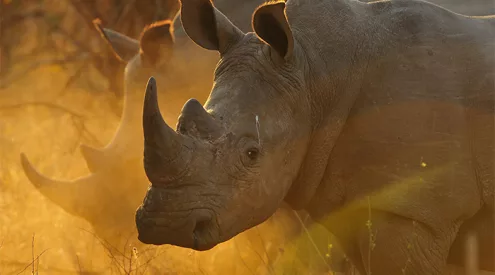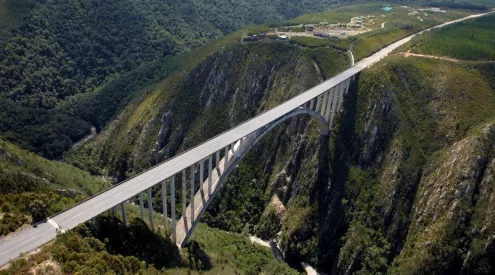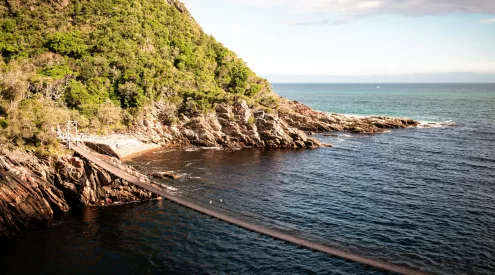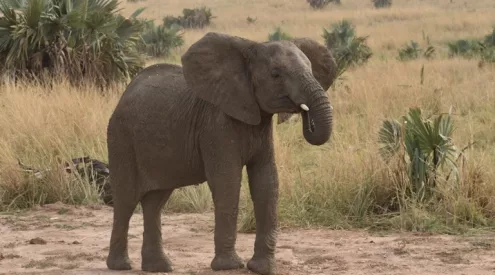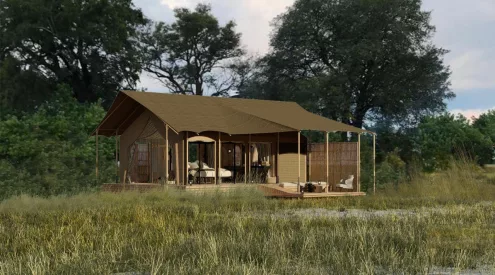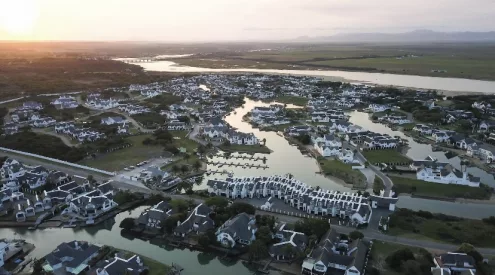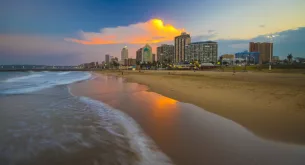The Two Oceans Aquarium’s latest ‘Bob update’ is extra special because it also provides updates on Turbo, a green turtle, and Pan, a loggerhead turtle, both of whom were released last year. Talitha Noble, Conservation Manager at the Two Oceans Aquarium Foundation, gives us the scoop.
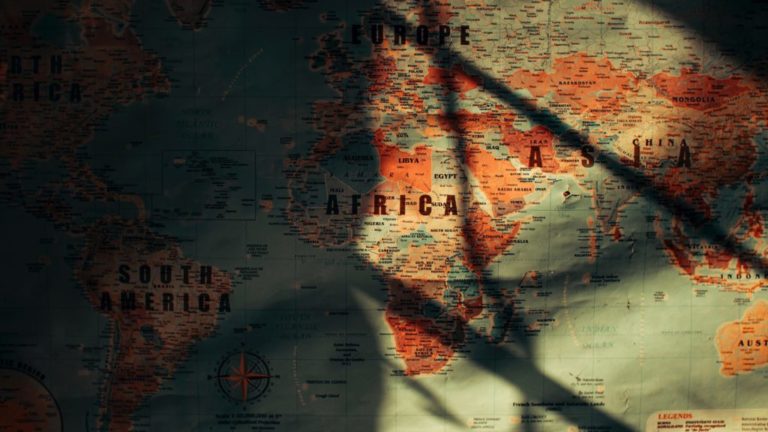
Also read: Bob crosses the Agulhas Bank into waters that are 3000 metres deep
‘Today we are marvelling not only at the adventurous travels of Bob but also at our young turtle friends, Turbo and Pan! All three turtles have been making their Aquarium family proud, exploring several Marine Protected Areas (MPAs), venturing into deeper parts of the Atlantic Ocean and much more,’ writes Noble.
Bob:
According to Nobel, Bob travelled the farthest west he’s ever been on 19 March: 290km southwest of the Turtle Conservation Centre (TCC) at the Two Oceans Aquarium. In the days since, Bob has followed the gentle surface currents, swimming southerly and getting closer to the TCC. He is now 190km from Cape Town.
‘Beating his personal best for water depth, Bob is currently exploring waters that are 3,800 metres deep! Turtles are a pelagic species; they inhabit the open ocean area above the seafloor and below the surface,’ explains Noble. ‘Most turtles are known as epipelagic, meaning they inhabit the upper 200 metres of the water column. Green turtles can dive to about 300 metres, and we are very impressed that Bob is navigating such deep water. The epipelagic zone is perfect for turtles like Bob—with abundant sunlight comes lots of nutrients and food, allowing turtles to breed, feed and grow to maturity in this area.’
He has swum a total of 2 760km in the last 56 days at sea, which equates to 50km per day. He covered this distance by staying in the surface currents.
Bob began his journey by following the fast-flowing Agulhas Current (averaging about two metres per second), but in his current location, the surface currents are much slower (averaging about 0.5 metres per second).
Bob swims wisely by not working harder than necessary and avoiding cold water. His water temperature is currently a respectable 21 degrees, which, according to Noble, is much warmer than the temperature his younger turtle friends are experiencing.
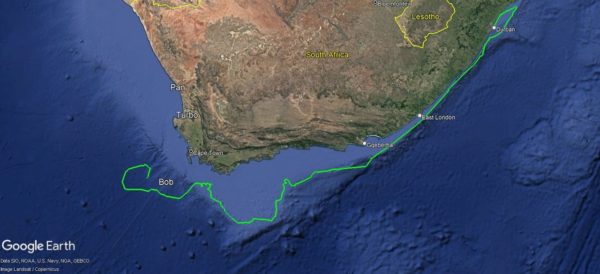
Turbo:
Turbo is a sub-adult green turtle that was released by the Two Oceans Aquarium Foundation in December 2022 along with a group of hatchlings. He’s been at sea for 101 days and 2 265km. That works out to an average of 22.4km per day.
Noble explains:
‘Shortly after his release, Turbo headed inshore and spent some time in the West Coast National Park, which includes several stunning MPAs. After exploring the area, Turbo headed offshore in a northerly direction. He looped around for a while, heading significantly further offshore (340 kilometres!) and then coming inland at Hondeklipbaai. Turbo has spent the last three weeks slowly moving south, hugging the coastline and enjoying the diverse marine life.’
He is currently in the shallower waters of Dwarskersbos. While the water on the West Coast is quite cold, Turbo has been hanging out over a shallow offshore reef, where the water can be up to 5 degrees warmer (currently around 19 degrees).
This location is also protected from the southeasterly wind, making it a great place to hang out all year long.
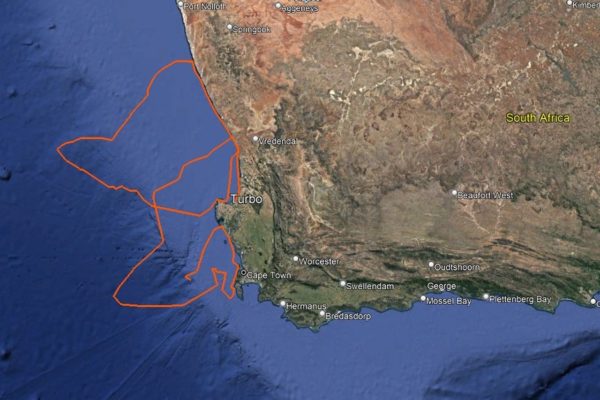
Pan:
‘Our dearest little Pan, a loggerhead turtle, was released on 7 July 2022 (a wild 259 days ago). Excitingly for us, his tag is still transmitting! In this period, he has travelled 5,600 kilometres, averaging 21.6 kilometres per day. This average distance per day is comparable with Turbo, a turtle of similar size,’ writes Noble.
Pan’s journey was predetermined from the start: he sailed north into the Atlantic Ocean without hesitation. By October 2022, he was 1,100km offshore; it appeared that he had completed an Atlantic crossing, but he turned around and began moving closer to land again. Pan arrived in the coastal waters of Hondeklipbaai (where Turbo had a pitstop) on 16 March 2023, before continuing southward.
Pan is currently near Lutzville, which is about 70km north of Lamberts Bay. The most remarkable aspect of Pan’s journey is that the water has not been particularly warm, not rising above 16 or 17 degrees in the last two weeks.
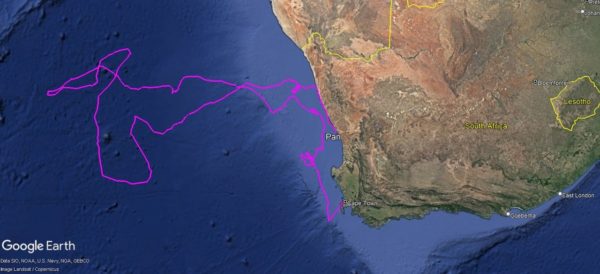
‘The West Coast of South Africa is filled with mystery when it comes to turtles,’ says Noble. ‘As cold-blooded reptiles, turtles typically prefer warmer waters. Yet, despite the cooler and often colder water, many of the turtles we’ve tracked have intentionally spent significant chunks of time along this Atlantic coast. There is certainly an abundance of food and other marine life in this area, but perhaps we have yet to discover other interesting drawcards.’
Bob’s latest statistics:
- Days since release: 56
- Distance travelled: 2 760km
- Distance from shore: 190km
- Nearest town: Cape Town
- Water depth: 3 800 metres
Written by Sarah du Toit
Follow us on social media for more travel news, inspiration, and guides. You can also tag us to be featured.
TikTok | Instagram | Facebook | Twitter
ALSO READ: Scientists create embryos to save northern white rhinos


